As a kid, I spent most of my time entranced by the natural world. There were the anthills I’d find on miniature backyard safaris and the newts I’d scoop up from the stream behind my elementary school. There were the fish at the aquarium, and the hours-upon-hours of Discovery Channel and Animal Planet content I absorbed. I had an illustrated encyclopaedia of life on Earth, and I could flip to any page to meet a new friend. But as an adult, it’s rare to look at anything in awe. Most of the news published about our planet isn’t good, and usually focuses on what’s gone wrong: Climate change, species extinctions, plastic pollution, environmental injustice. All of that is undeniably important. But sometimes, taking a break from the crises and appreciating what we still have is important, too. After all, it’s hard to keep up the good fight if you can’t remember what you’re fighting for.
These images, all finalists and winners from the 2022 Big Picture News: World Photography Competition, serve as a nice reminder. Take a deep breath, take a minute to slow down, and take a look at some incredible pictures of our planet and its inhabitants.
This gallery was originally published in bioGraphic, an independent magazine about nature and conservation powered by the California Academy of Sciences, and media partner of the BigPicture Natural World Photography Competition.
Terrestrial Life Finalist: The Stoat’s Game

The Stoat’s Game By Jose Grandío
Photographer Jose Grandío captured this stoat mid-air in the French Alps. The animal emerged from its burrow and “leapt and danced for about a half an hour before returning to his den for the rest of the day,” wrote bioGraphic cofounder and science journalist Stephanie Stone, in a description of the picture.
Stoats and other weasels commonly jump, dart, and wiggle in complicated behavioural displays. Scientists aren’t sure exactly why the critters do this, but one common hypothesis is that the movements help them to confuse and capture prey or dissuade predators. Researchers have also classified the frenetic behaviour as a form of play, especially in domestic ferrets kept as pets.
In the instance of this photo, Grandío told Stone that there weren’t any other animals around. He interpreted the stoat’s movements as “something like a game for him.”
Aquatic Life Finalist: Tunnel Vision
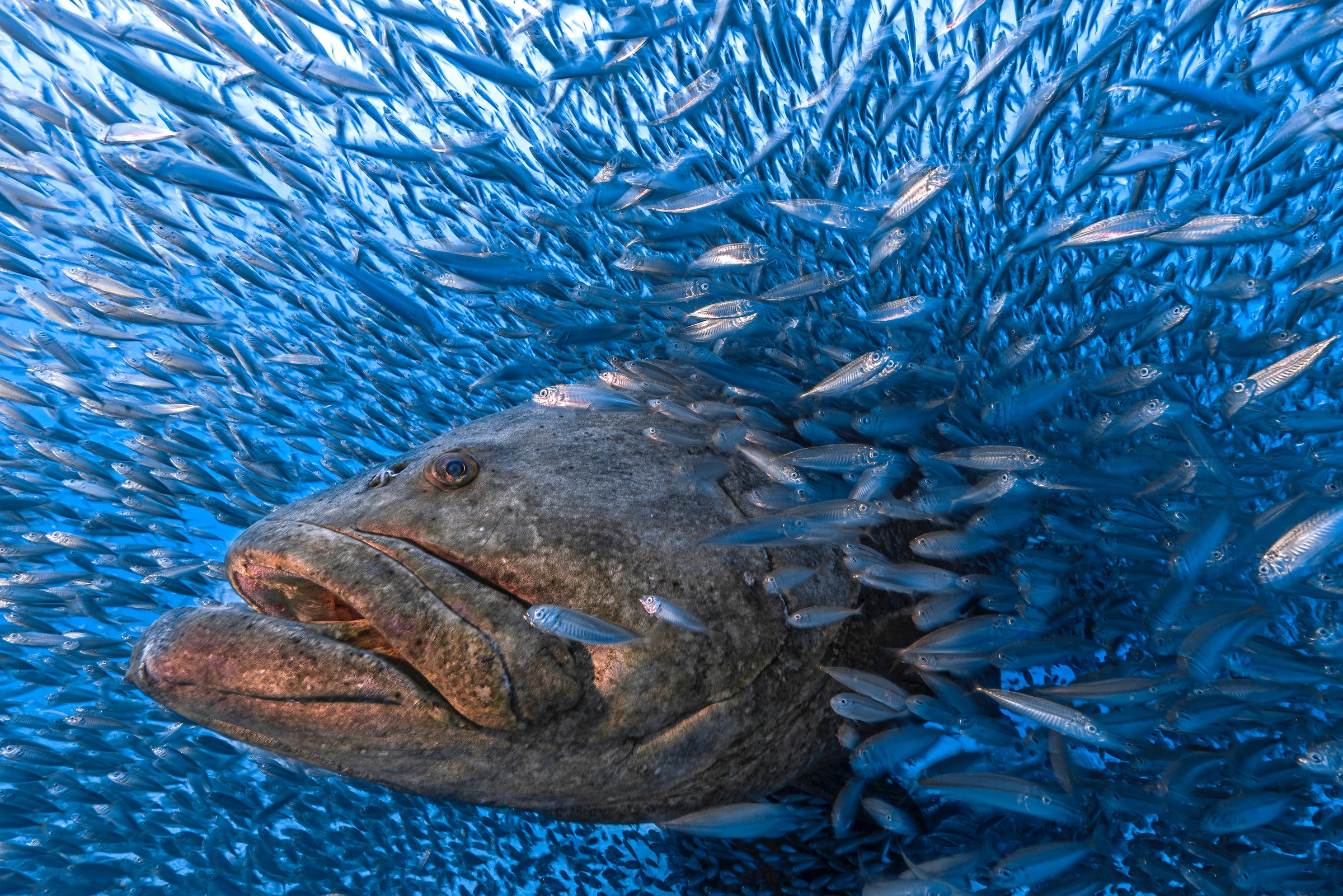
Tunnel Vision by Tom Shelsinger
Tom Shelsinger took this photo of a male Atlantic goliath grouper surrounded by scads off the coast of Florida during the groupers’ spawning season. Goliath groupers are the Atlantic’s biggest grouper species, and can weigh up to 800 pounds.
In past decades they were heavily overfished, and their numbers dropped precipitously. But regulations and a moratorium on goliath grouper fishing helped the population start to recover. Earlier this year though, Florida began once again issuing sport permits for the giant fish, against the advice of many scientists.
Human/Nature Finalist: Face to Face
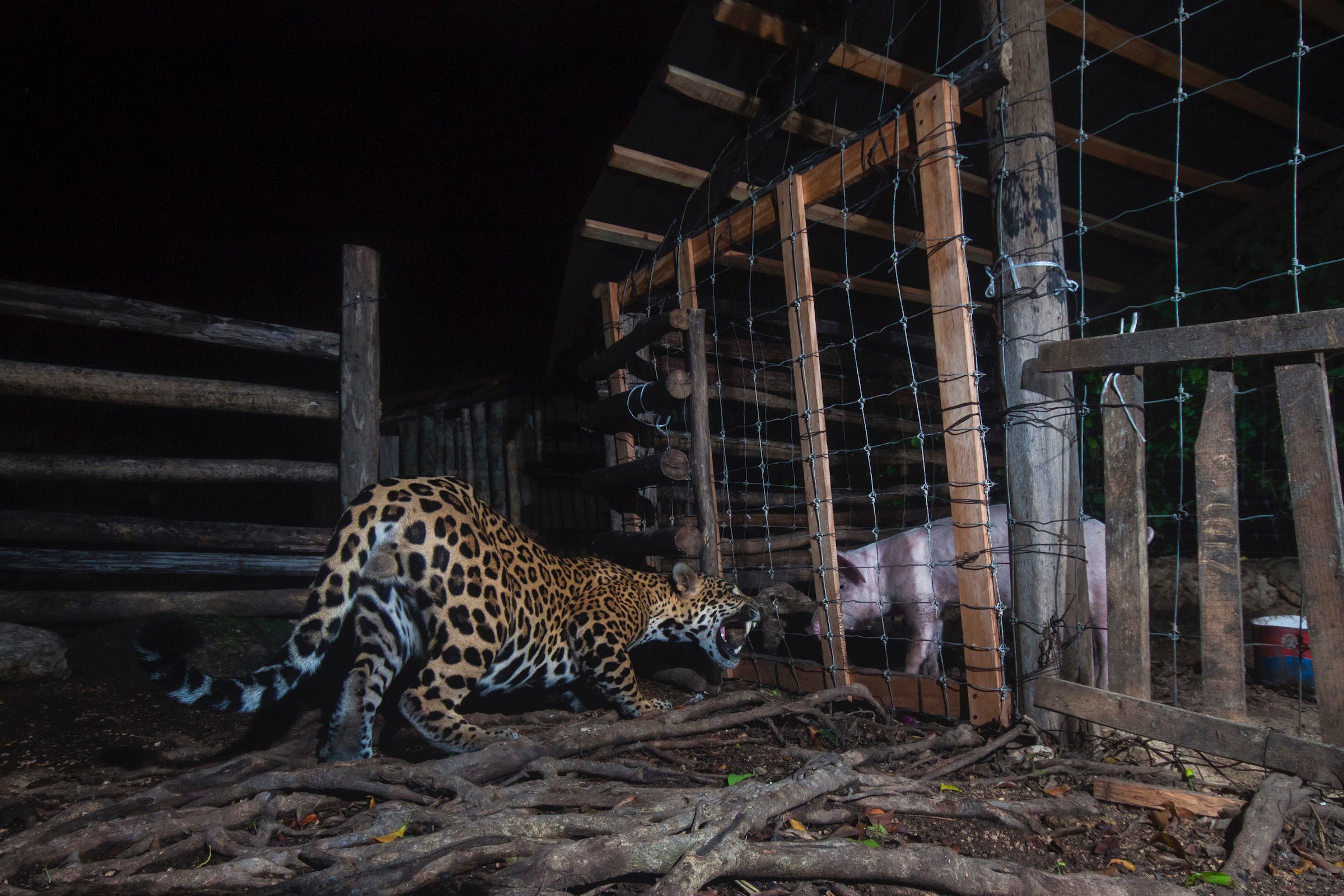
Face to Face by Fernando Constantino Martínez Belmar
Jaguars frequently find themselves at odds with human-imposed conditions in their natural ranges. Here, a jaguar faces off against a domestic pig on the Yucatán Peninsula in Mexico.
Despite the apparent conflict, protected areas and conservation corridors in the region seem to be helping Jaguar populations recover and thrive.
Terrestrial Life Finalist: Embryology

Embryology by Jaime Culebras
A goopy egg mass dangles, suspended, from the tip of a fern frond in Ecuador. The developing eggs were laid by a female Wiley’s glass frog, a species first documented in 2006. Since it was discovered, the small, transparent-bellied frog has remained rather mysterious: The amphibian is categorised as “data deficient” by the IUCN, meaning there’s not enough information available to know how the frogs are doing.
“The species included in this Data Deficient category are ignored in conservation strategies,” photographer Jaime Culebras told bioGraphic. “However, many scientists consider that they should be treated as an urgent conservation priority and are pushing to develop studies that allow us to know their true status,” he added.
Aquatic Life Finalist: Shooting Star
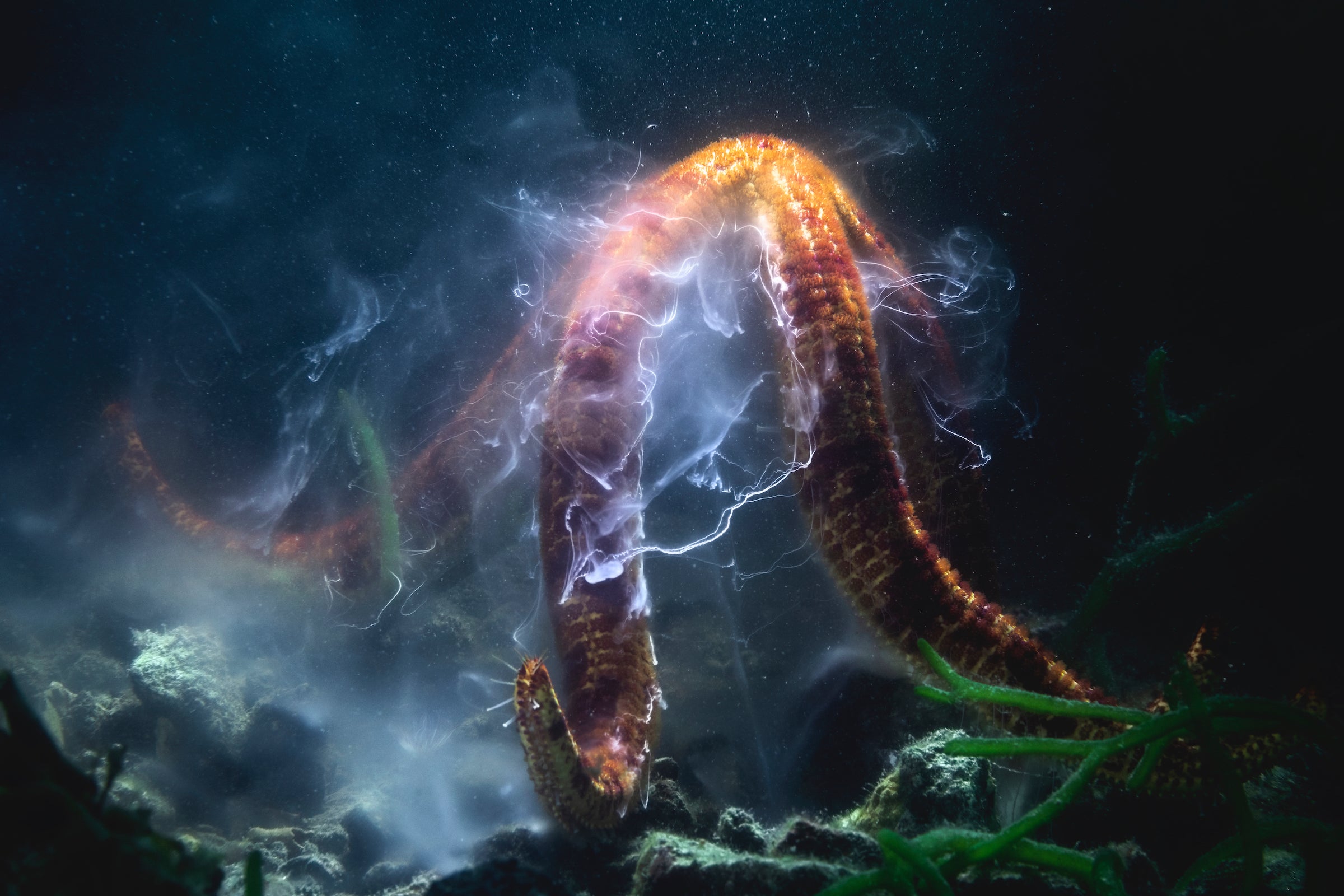
Shooting Star by Tony Wu
A Leach’s sea star emits a cloud of white sperm into the sea water off the coast of Kagoshima, Japan. To get this particular photograph, Tony Wu patiently watched the starfish for over an hour. “At some point, I realised that the animal was not sending out gametes willy-nilly,” he told bioGraphic. “It timed its release of sperm for certain moments, perhaps as a reaction to current flow and strength.”
Terrestrial Life Winner: Spider Web
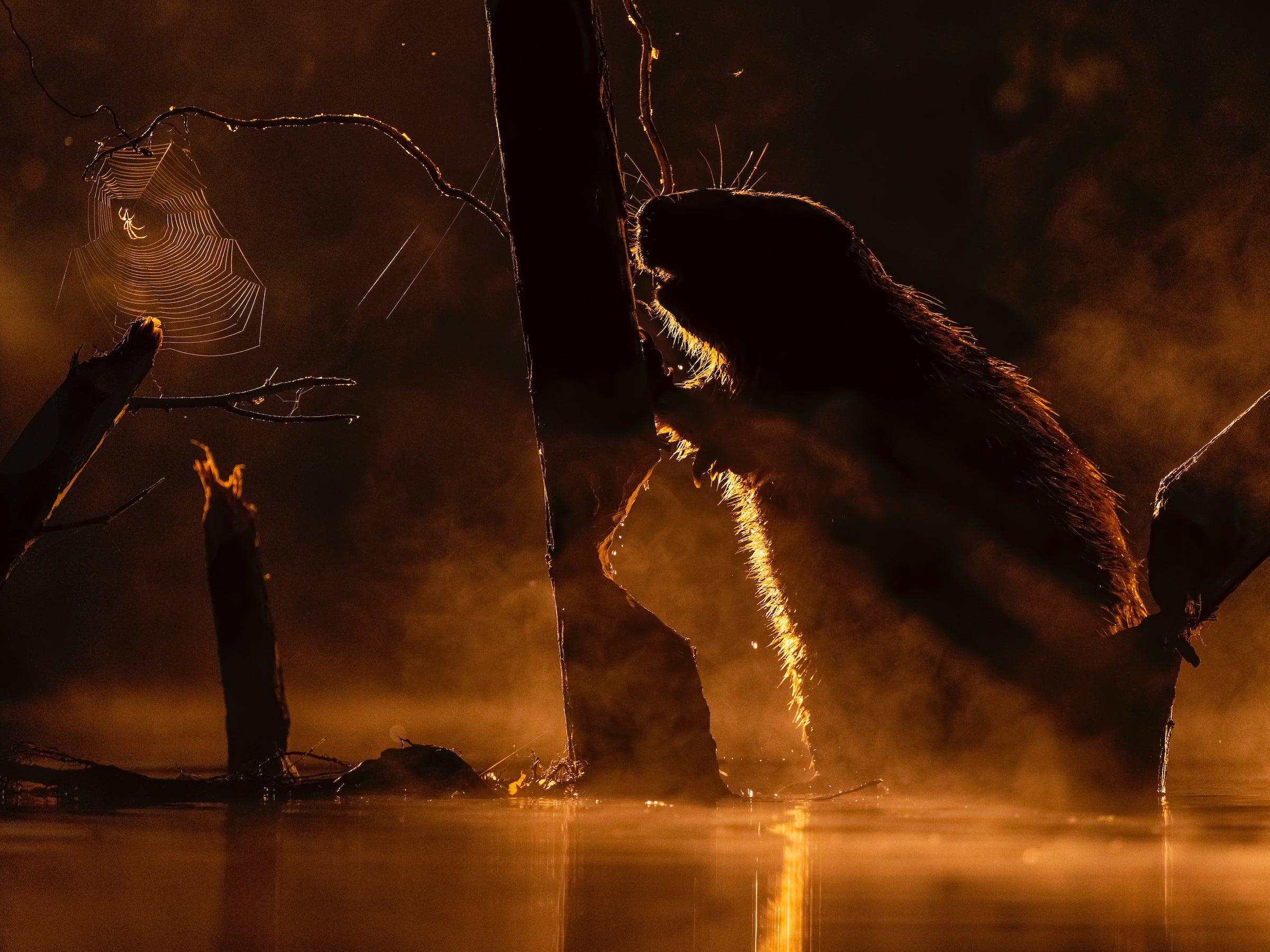
Spider Web by Bence Máté
In Hungary, where Bence Máté captured this photograph, Eurasian beavers were extirpated (or made locally extinct) by hunters in 1865. However, the large rodent returned to Hungary in 1985 via natural dispersion. Their populations have been growing since.
Beavers are a keystone species that help shape the ecosystems they live in, making habitat for other animals to thrive.
Aquatic Life Winner: After the Fall
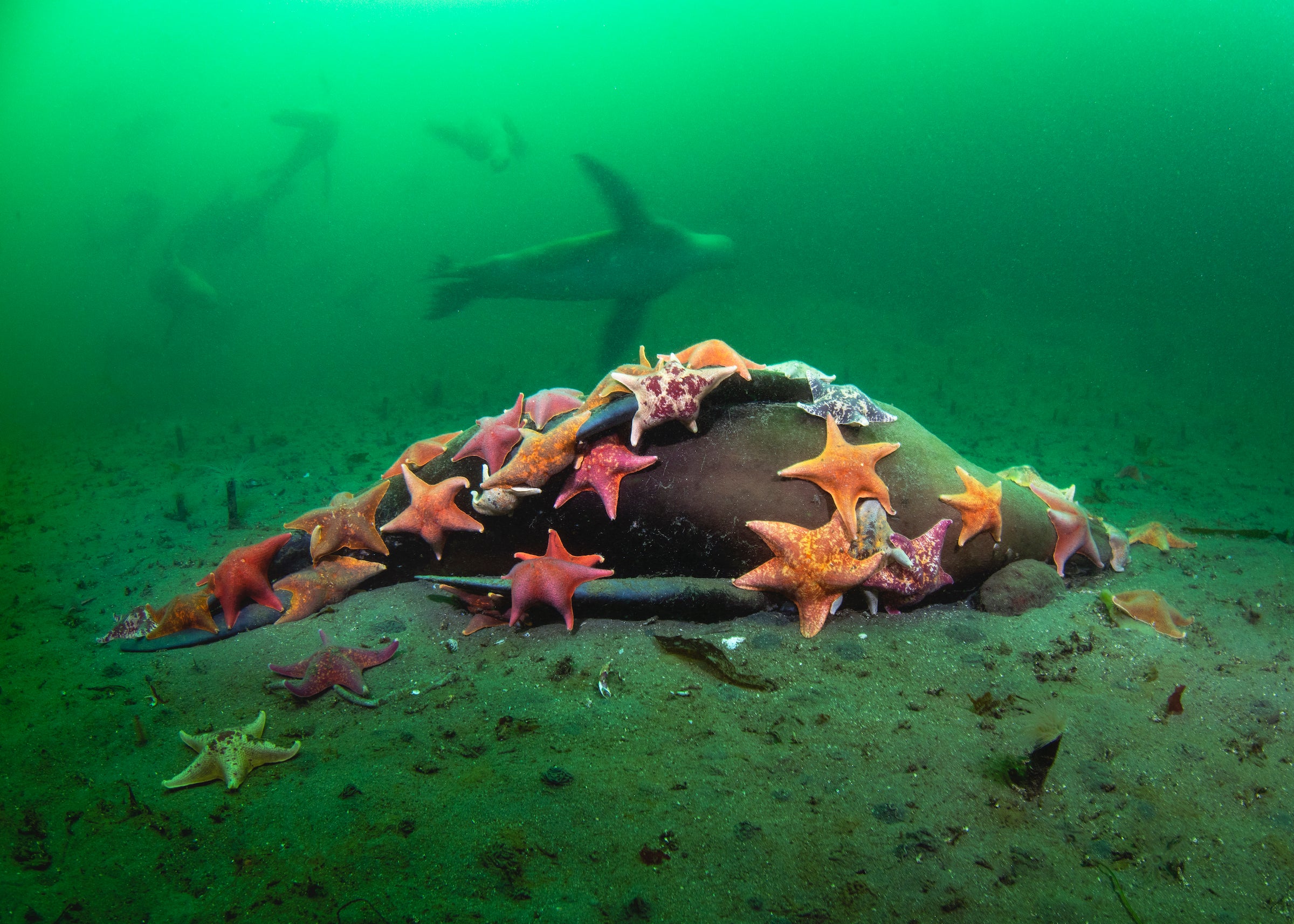
After the Fall by David Slater
It’s the classic circle of life scenario, captured in surreal colours. A dead California sea lion fell to the sea floor, and scavenging starfish made a meal of the carcass. David Slater was lucky enough to be there in Monterey Bay to photograph it.
“I had never known death to be this beautiful,” Slater told bioGraphic, “and I was humbled to be a part of this sea lion’s fall.”
Winged Life Winner: Frame Within a Frame
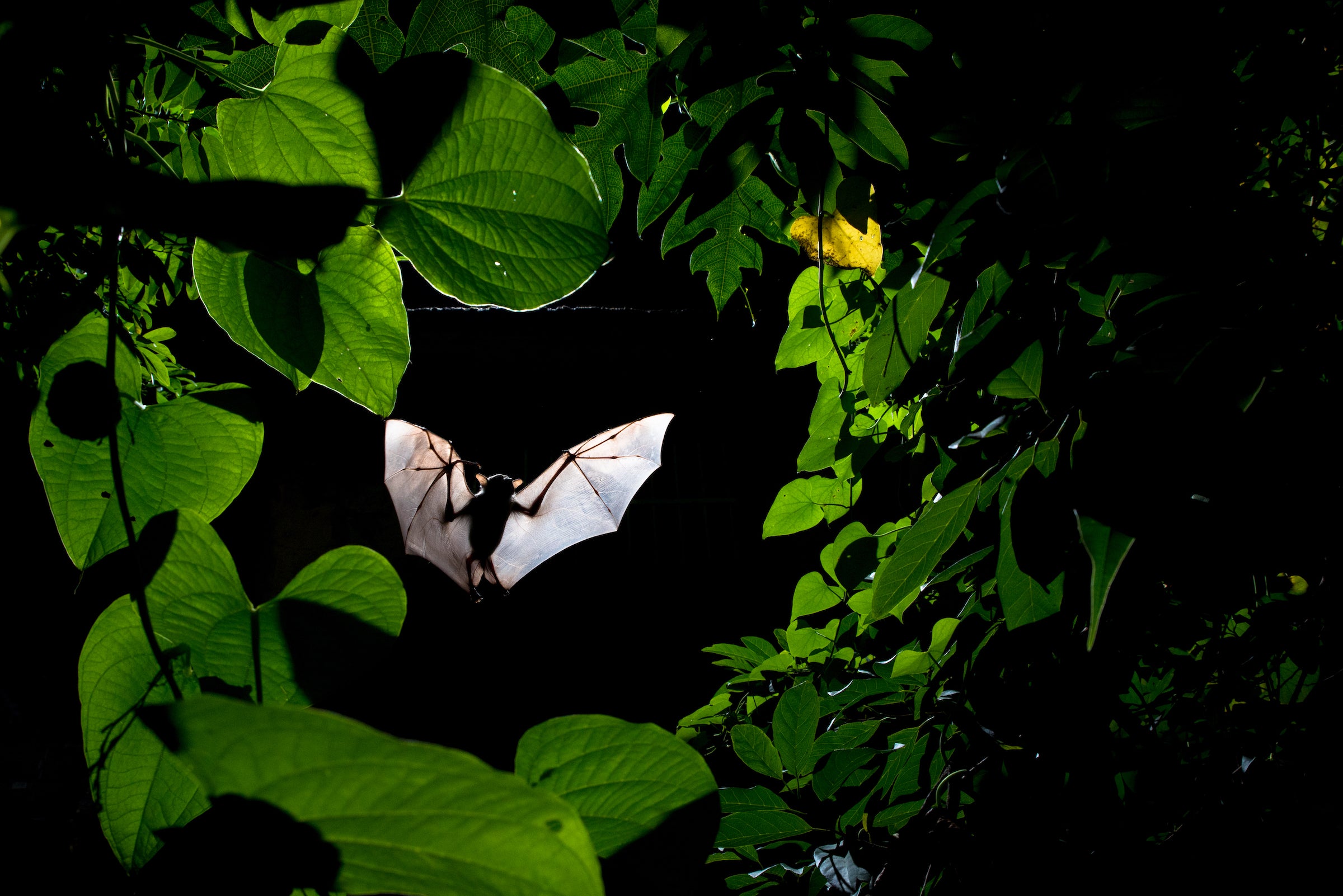
Frame Within a Frame by Sitaram May
Sitaram May spent multiple nights during Covid-19 lockdowns carefully observing the fruit bats near his home in Badlapur, India. A lot of patience earned him this shot of a bat perfectly framed by greenery.
Fruit bats are crucial pollinators and seed dispersers, though the pandemic may have wrongly solidified many peoples’ views of bats as pests. In India, people are allowed to kill many species of fruit bats without repercussion. Their populations may be suffering because of it.
Human/Nature Winner: Sickening Delicacy
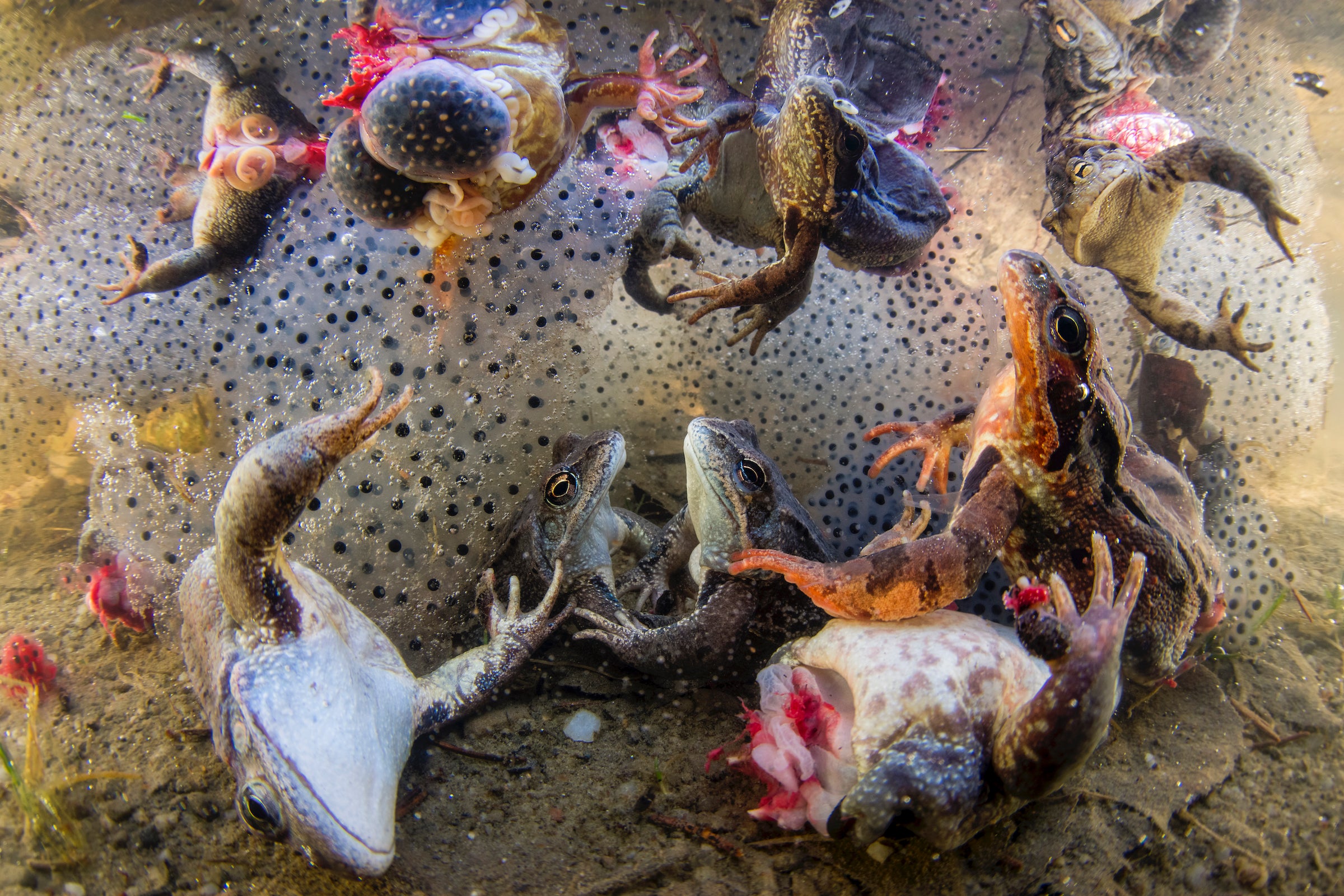
Sickening Delicacy by Bence Máté
Not all of the photos on display in The Big Picture contest were pure natural beauty. Instead some of the images were awesome in the oldest sense of the word. In this carefully arranged tableau, photographer Bence Máté documented the horror of human frog poaching in Romania’s Carpathian region. He simultaneously captured the next generation of frogs as well, by including gelatinous egg masses in the frame.
Frogs are widely hunted for their back legs, which are sold as a prized food in many countries around the world. In this instance, Máté told bioGraphic that poachers had killed the frogs while they were spawning, cutting off their legs as they attempted to mate. “It was the cruelty that shocked me most,” Máté said to bioGraphic.
Landscape Winner: Hidden Beauty

Hidden Beauty by Tom St George
Hiding in this underwater cave, or cenote, in Mexico’s Yucatán Peninsula, are a bevy of fish and zooplankton species, some of which are found nowhere else in the world. These animals are uniquely adapted to the conditions within the cave systems where they live.
Humans, too, rely on the cenotes. The only reliable fresh water source for people on the peninsula is groundwater, much of which is stored in cenotes. This water source is vulnerable to contamination from pollution aboveground and development.
From bioGraphic:
A local indigenous group, Kana’an Ts’onot, which translates to Guardians of the Cenotes, is now fighting for the Yucatán’s underground rivers system to be recognised by the Mexican authorities as an entity with legal rights — a step they hope will lead to stricter policies regulating development, pollution, and wastewater treatment. St George, who took this photo
to both highlight the incredible natural beauty of Mexico’s underwater cave systems and draw attention to the threats they face, is pulling for them to succeed.
Art of Nature Winner: Into the Light

Into the Light by Pål Hermansen
All of the insects displayed here were collected from a single outdoor light fixture after the light was left on for a night in Ski, Norway. Photographer Pål Hermansen carefully arranged each dead insect against a white background to bring attention to “the hidden creatures that are a foundation for our lives — creatures that we easily ignore,” he told bioGraphic.
The picture demonstrates the wide diversity and abundance of the insects all around us. And that diversity and abundance are, in many ways, a fundamental pillar of the animal kingdom. We need insects for pollination services, to support the food web, and so much more.
But scientists have begun to discover that many insect populations are declining worldwide. One potential threat to insects, well illuminated by Hermansen’s photo: light pollution.
Grand Prize Winner: Bee Balling
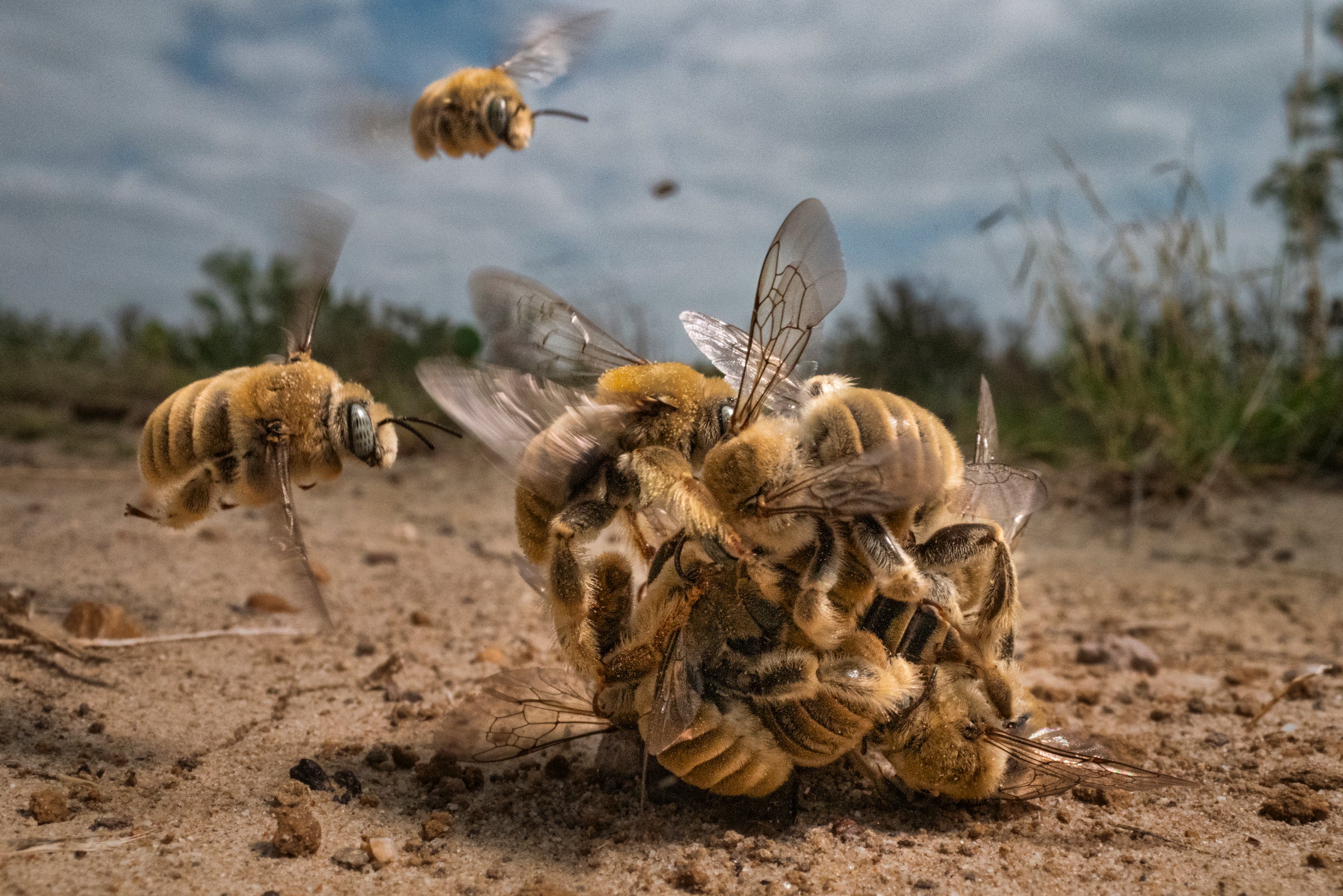
Bee Balling by Karine Aigner
Cactus bees in South Texas form a mating ball in front of in front of photographer Karine Aigner’s camera lens. The hubbub began when one female bee emerged from a ground nest and was swarmed by multiple males, eager to shoot their shot.
These mating balls are ephemeral, lasting under a minute, and the phenomenon is rarely observed directly. Mating balls also only happen during a period of a few days each year, when the adult cactus bees come together in large aggregations. To capture this photo, both Aigner and the bees had to get lucky.
But it’s not all fun for the (birds and the) bees. “Mating in the bee balls often takes place on extremely hot, bare ground,” Avery Russell, an entomologist from Missouri State University, told bioGraphic. “Grappling males might risk cooking themselves [to mate].”
